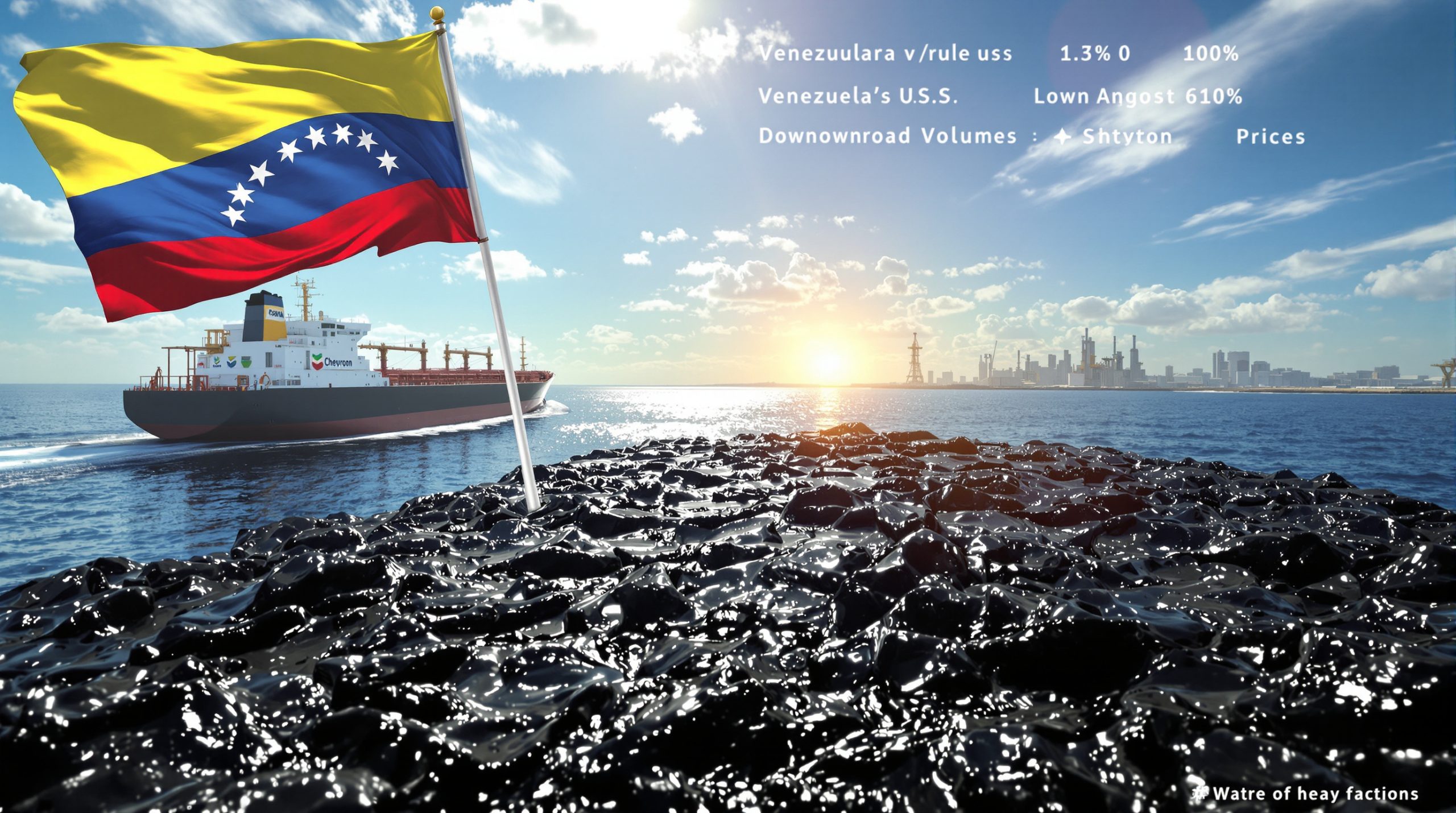US Invests $1 Billion in Critical Minerals: Strengthening Domestic Supply Chains
The United States has taken a significant step toward securing its critical mineral supply chains with a major federal investment announced on August 13, 2025. The Trump administration, through the Department of Energy, has committed $1 billion to bolster domestic capabilities in mining, processing, and manufacturing technologies for critical minerals and materials.
This strategic funding initiative represents one of the most substantial federal investments in mineral resource development in recent decades, signaling a shift in national priorities toward resource independence and supply chain security. The Trump minerals order has accelerated efforts to reduce dependency on foreign sources for these essential materials.
What Does the $1 Billion Critical Minerals Funding Package Include?
Key Components of the Federal Funding Initiative
The $1 billion allocation from the Trump administration's Energy Department represents a comprehensive approach to strengthening America's critical minerals sector. The funding package is designed to address vulnerabilities across the entire supply chain—from extraction to processing to manufacturing.
According to the Department of Energy's announcement, the funding will be disbursed through a series of notices of funding opportunities (NOFOs) that target specific technological and infrastructure gaps in the domestic critical minerals ecosystem.
Key components include:
- Capital investments for scaling up mining operations at existing sites
- Funding for the development of advanced processing facilities on US soil
- Support for manufacturing technologies that utilize domestically-sourced materials
- Research and development grants for sustainable extraction and processing methods
- Technology commercialization pathways for innovative approaches to critical minerals
The initiative places particular emphasis on technologies that can accelerate the timeline from resource discovery to commercial production, addressing one of the most significant challenges in responding to market demands.
Timeline for Implementation
The Department of Energy has outlined a phased approach for implementing this critical minerals investment:
- Initial announcement: August 13, 2025
- First round of funding opportunity notices: Expected Q4 2025
- Application period for initial projects: Early 2026
- First funding disbursements: Mid-2026
- Project implementation timeline: 2026-2030
This phased approach allows for strategic prioritization of the most critical supply chain vulnerabilities while providing a roadmap for long-term development of domestic capabilities.
Industry stakeholders will have multiple opportunities to participate, with different funding tracks expected to address various stages of the supply chain—from exploration companies to processors to manufacturers utilizing these materials.
Why Is the US Investing in Critical Minerals Now?
Strategic Importance to National Security
The timing of this investment reflects growing concerns about mineral supply vulnerabilities and their implications for national security. The United States currently depends on imports for more than 50% of its consumption of 31 critical minerals, with complete import dependency for 14 minerals considered essential to defense and technology applications.
This dependency creates strategic vulnerabilities that have become increasingly apparent amid global supply chain disruptions and growing resource competition.
The Department of Defense has identified reliable access to critical minerals as essential for:
- Advanced weapons systems development and maintenance
- Communications and intelligence technologies
- Aerospace applications including aircraft and missiles
- Energy storage systems for military operations
- Cybersecurity infrastructure and hardware
"Access to critical minerals is increasingly a matter of national security, not just economic competitiveness. Nations that control these resources effectively control the building blocks of the modern world." — Defense industry security analyst
The $1 billion funding package aims to address these vulnerabilities by rebuilding domestic capabilities that have eroded over decades of offshoring and underinvestment.
Economic Growth Opportunities
Beyond national security concerns, the investment in critical minerals represents a significant economic opportunity for mineral-rich regions across the United States.
The domestic critical minerals sector has potential to create thousands of high-paying jobs across multiple states. Based on industry analysis, fully developed critical mineral supply chains could generate:
- 5,000-7,000 direct mining jobs
- 3,000-4,000 positions in processing and refining
- 10,000+ manufacturing jobs utilizing these materials
- Thousands of additional indirect jobs in supporting industries
These economic benefits would be concentrated in regions with existing mineral deposits, potentially revitalizing communities that have experienced industrial decline.
Additionally, domestic production creates competitive advantages for US manufacturers by:
- Reducing supply chain risks and volatility
- Lowering transportation costs and carbon footprints
- Enabling closer collaboration between material producers and end users
- Creating innovation clusters around critical material processing
The long-term economic benefits extend beyond direct job creation to include technology development, export opportunities, and industrial revitalization.
Which Critical Minerals Are Being Prioritized?
High-Priority Materials for Energy Transition
The funding initiative places particular emphasis on minerals essential to clean energy technologies and the ongoing energy transition. These materials face rapidly growing demand curves that outpace current supply capabilities.
Key energy transition minerals receiving prioritization include:
| Mineral | Primary Applications | Current US Import Dependency |
|---|---|---|
| Lithium | EV batteries, grid storage | 80%+ |
| Cobalt | High-performance batteries | 75%+ |
| Nickel (Class 1) | EV batteries, alloys | 50%+ |
| Graphite | Battery anodes | 100% |
| Rare Earth Elements | Permanent magnets, motors | 80%+ |
| Manganese | Battery cathodes | 100% |
The International Energy Agency estimates that demand for these minerals could increase by 400-4,000% by 2040, depending on the pace of energy transition. Current domestic production capabilities fall far short of meeting this projected demand.
The funding prioritizes not only raw material extraction but also the processing capabilities needed to transform minerals into usable materials for manufacturers—addressing a critical gap in the US supply chain. Furthermore, direct lithium extraction technologies are receiving significant attention as they offer more environmentally friendly approaches to obtaining this crucial battery material.
Strategic Defense Materials
Beyond energy materials, the initiative targets minerals essential for defense applications and advanced technologies that underpin national security capabilities.
Priority defense-related minerals include:
- Titanium: Essential for aerospace structures, armor, and naval applications
- Tungsten: Used in armor-piercing ammunition, rocket nozzles, and radiation shielding
- Molybdenum: Critical for high-strength steel alloys in military vehicles and vessels
- Gallium: Semiconductor applications in radar systems and communications
- Germanium: Infrared optical technologies and fiber optics
- Platinum Group Metals: Catalysts, sensors, and specialized electronics
- Antimony: Flame retardants for military equipment and ammunition
- Beryllium: Aerospace components, nuclear applications, and precision instruments
Many of these materials have no effective substitutes for their specialized applications, making supply assurance a matter of national security rather than simply economic policy. The antimony benefits for defense applications, for instance, make it particularly crucial for military readiness.
How Will This Funding Address Supply Chain Vulnerabilities?
Current Supply Chain Challenges
The US critical minerals supply chain faces multiple structural challenges that the funding initiative aims to address:
-
Processing Bottlenecks: While the US has significant mineral resources, domestic processing capacity is limited. Over 80% of rare earth processing occurs in China, creating a critical vulnerability even when raw materials are sourced domestically.
-
Technical Capability Gaps: Decades of underinvestment have led to technological lags in extraction and processing methods compared to global competitors.
-
Permitting Timelines: The average mine permitting process in the US takes 7-10 years, compared to 2-3 years in countries like Australia and Canada with similar environmental standards.
-
Financing Constraints: Critical mineral projects face challenging economics due to price volatility, long development timelines, and uncertain regulatory environments.
-
Workforce Limitations: Specialized knowledge in mineral processing and metallurgy has declined as these activities moved offshore.
These vulnerabilities create cascade effects throughout defense and technology supply chains, limiting domestic manufacturing capabilities and creating strategic risks.
Targeted Solutions Through Funding
The $1 billion funding package targets these vulnerabilities through strategic investments across the supply chain:
-
Mining Innovation: Approximately 30% of funding will support technologies that improve the economics and environmental performance of domestic extraction, including advanced exploration techniques, precision mining methods, and water conservation technologies.
-
Processing Capabilities: The largest funding allocation (approximately 40%) targets the critical middle stage of the supply chain—turning raw materials into usable industrial inputs through investments in separation, refining, and processing facilities.
-
Manufacturing Integration: About 20% of funding will support downstream manufacturers in adapting to domestically-sourced materials, including material qualification programs and process adaptations.
-
Recycling and Circular Economy: The remaining 10% will support technologies for recovering critical minerals from waste streams, including electronics recycling, industrial byproducts, and mine tailings.
"The most critical vulnerability in our supply chain isn't necessarily at the mining stage—it's the midstream processing capabilities that turn raw materials into usable inputs for manufacturers. That's where this funding could make the most significant impact." — Materials science researcher
By addressing the full supply chain rather than just extraction, the initiative aims to create resilient domestic capabilities that can withstand market fluctuations and geopolitical challenges.
What Technologies Will Receive Development Support?
Mining Innovation Funding
The mining component of the funding package focuses on technologies that can improve the economics, sustainability, and timeline of domestic mineral production:
-
Advanced Exploration Technologies: Including machine learning for resource identification, non-invasive sensing methods, and predictive geological modeling to reduce exploration costs and improve discovery rates.
-
Environmentally Responsible Extraction: Development of mining methods that minimize surface disturbance, reduce water usage, and eliminate persistent contaminants.
-
Automation and Digitalization: Implementation of autonomous equipment, real-time monitoring systems, and digital twins to improve safety and efficiency.
-
In-Situ Recovery Methods: Funding for techniques that extract minerals through dissolution rather than conventional mining, potentially reducing environmental footprint for suitable deposits.
-
Small-Footprint Mining: Technologies enabling economic extraction from smaller, higher-grade deposits that might not be viable with conventional approaches.
These investments aim to address both the economic and environmental challenges that have limited domestic mineral development, potentially unlocking resources that have remained undeveloped due to technical constraints.
Processing Technology Advancement
The largest portion of funding targets processing technologies—the critical link between raw materials and usable industrial inputs:
-
High-Efficiency Separation: Methods for isolating individual elements from complex mineral mixtures with reduced energy and chemical inputs.
-
Direct Extraction Techniques: Technologies that can extract specific elements while leaving contaminants behind, particularly relevant for lithium extraction from brines and clays.
-
Modular Processing Systems: Scalable, transportable processing units that can be deployed near mining sites to reduce transportation costs and enable distributed processing.
-
Alternative Processing Pathways: Novel chemical and biological approaches to mineral processing that avoid harsh reagents and reduce environmental impacts.
-
Energy-Efficient Refining: Technologies reducing the substantial energy requirements for converting concentrates to high-purity materials.
These investments address the most significant gap in the US supply chain—the ability to convert domestic mineral resources into the high-purity materials required by manufacturers.
Manufacturing Integration
The funding also supports downstream manufacturers in utilizing domestically-sourced materials:
-
Material Qualification Programs: Streamlining the process for qualifying new material sources for defense and aerospace applications.
-
Supply Chain Tracking Systems: Technologies for verifying material provenance and ESG performance throughout the supply chain.
-
Process Adaptation Technologies: Supporting manufacturers in adapting their processes to accommodate variations in domestically-sourced materials.
-
Design Optimization: Engineering approaches to reduce critical mineral intensity in end products while maintaining performance.
This integration between material producers and manufacturers creates market pull for domestic resources while ensuring that processed materials meet the exacting specifications of end users.
What Are the Environmental Considerations?
Balancing Resource Development and Environmental Protection
The funding initiative explicitly incorporates environmental performance as a key criterion for project selection, acknowledging the tension between mineral development and environmental protection.
Approximately 25% of the funding is earmarked for technologies and approaches that improve environmental outcomes, including:
-
Water Conservation Technologies: Methods to dramatically reduce or eliminate freshwater usage in mining and processing operations.
-
Clean Processing Chemistry: Development of non-toxic alternatives to conventional chemical processes used in mineral separation and refining.
-
Emissions Reduction: Technologies to eliminate air pollutants and greenhouse gas emissions from processing operations.
-
Land Reclamation Innovations: Advanced approaches to mine site restoration that create improved post-mining land uses.
-
Biodiversity Protection: Methods for minimizing habitat disturbance and protecting sensitive species during resource development.
"The false choice between environmental protection and resource development needs to be overcome through innovation. This funding could help demonstrate that critical minerals can be produced with world-leading environmental performance." — Environmental policy expert
The initiative's emphasis on environmental performance reflects both regulatory requirements and growing market demands for responsibly-sourced materials. The evolution of mine reclamation innovations has become increasingly important as the industry seeks to reduce its environmental footprint.
Regulatory Framework Integration
The funding program will operate within existing environmental regulatory frameworks while seeking opportunities to improve efficiency without compromising standards:
-
Permitting Coordination: Resources for improved coordination between federal agencies involved in mine permitting.
-
Performance Standards: Emphasis on outcome-based environmental standards rather than prescriptive requirements.
-
Best Practices Development: Funding for development and dissemination of environmental best practices specific to critical minerals.
-
Life-Cycle Assessment Tools: Resources for standardized life-cycle impact assessment of different supply chain approaches.
Projects receiving funding will need to demonstrate how they exceed minimum regulatory requirements and advance best practices in environmental management.
How Will This Impact Domestic Mining Companies?
Opportunities for Industry Participants
The funding initiative creates multiple pathways for domestic mining companies to accelerate development plans and overcome technical challenges:
-
Junior Exploration Companies: Access to capital for proving new resource discoveries and developing preliminary economic assessments.
-
Mid-Tier Producers: Support for expanding existing operations to include critical mineral recovery from current production.
-
Major Mining Companies: Partnership opportunities for implementing advanced technologies at scale across multiple operations.
-
Technology Providers: Funding to demonstrate and commercialize innovative approaches to extraction and processing.
-
Processing Specialists: Capital for establishing domestic processing capabilities for materials currently processed overseas.
The structure of the funding encourages collaboration between traditional mining companies and technology developers, potentially creating new business models for mineral resource development. This approach aligns with broader trends in mining industry evolution toward more technological integration and sustainability.
Requirements for Funding Recipients
Companies seeking to access the funding will need to meet specific criteria designed to ensure domestic benefits and responsible practices:
-
Domestic Value Addition: Demonstration that processing and manufacturing will occur on US soil rather than exporting raw materials.
-
Environmental Performance: Commitment to exceeding baseline regulatory requirements with quantifiable improvements in key metrics.
-
Technology Sharing: Willingness to share non-proprietary learnings and best practices developed through funded projects.
-
Economic Viability: Demonstration of pathway to commercial viability without permanent subsidies.
-
Supply Chain Security: Commitments regarding production volumes and domestic availability of processed materials.
These requirements aim to ensure that public investments translate to lasting improvements in domestic supply chain resilience rather than short-term profits.
According to a recent analysis by the US mining industry, the funding could potentially unlock over $5 billion in private capital investment over the next decade by de-risking early-stage technology development and demonstration projects.
Want to Stay Ahead of Major Mineral Discoveries?
Discovery Alert's proprietary Discovery IQ model instantly notifies investors of significant ASX mineral discoveries before the broader market reacts, turning complex geological data into actionable investment opportunities. Explore our dedicated discoveries page to understand how historic mineral discoveries have generated extraordinary returns for early investors.




